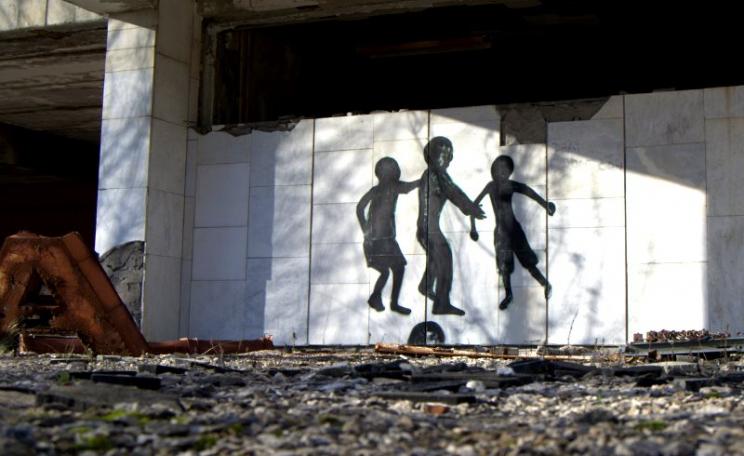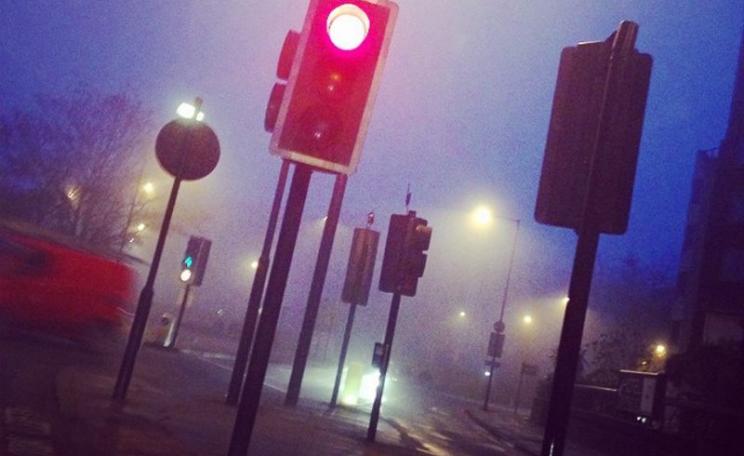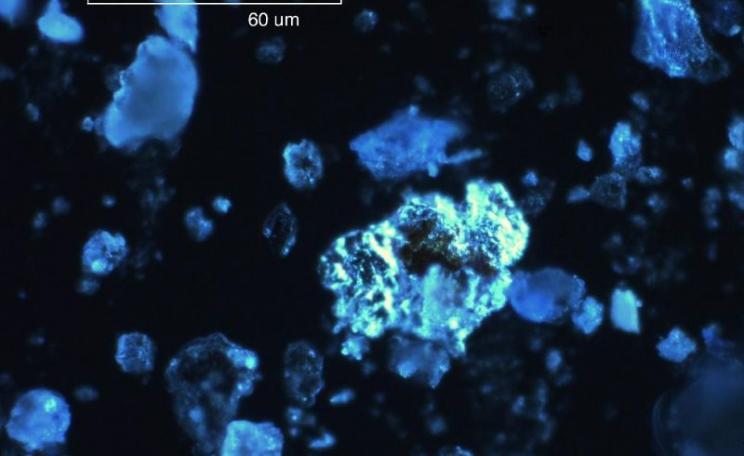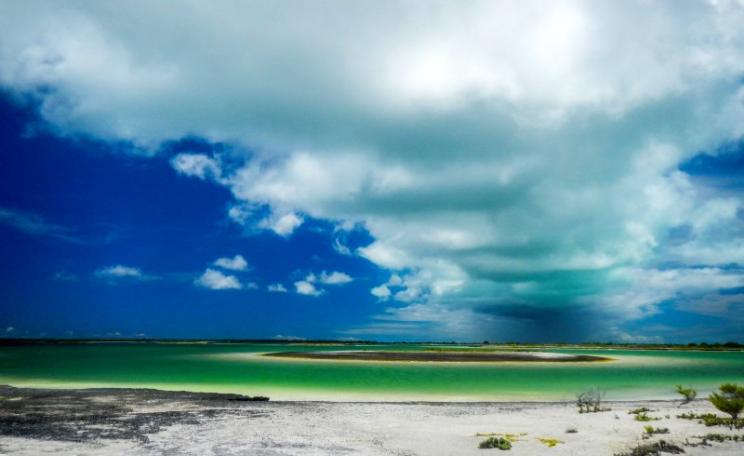On trial was the whole global system of legislation on radiation risk, and the scientific basis of all radiation laws: the Risk Model of the ICRP which defines the public health safety cases for nuclear energy, radioactive waste, and nuclear weapons.
It usually takes no more than a few weeks for the High Court to deliver its judgments, six weeks at the most - and that's only in long and complex cases. Most often litigants get their judgment within a week or so.
But very much not in the case of Nuclear Bomb Test Veterans versus Secretary of State for Defence. We were in Court 25 of the Royal Courts of Justice in London for three weeks from 13th June. I was presenting the veterans' case.
Seventeen weeks have now passed since the case finished, yet the Judge, the distinguished QC Sir Nicholas Blake, has still not delivered his Decision. I can only wonder: why not?
Sir Nicholas never quite went out of his way to be kind to me, but his handling of the case was fair and I very much hope that the same fate has not befallen him, as befell a previous judge presiding over our case at an earlier stage of its slow progress through the court system.
That judge was Hugh Stubbs. He unexpectedly died of pancreatic cancer on 31st January 2014, while we were in the Appeal Court asking for his previous decision in February 2013 to be overturned; in the event, successfully.
His was not a long, drawn out death, incidentally. He was alive, apparently well, on the ball and very much in charge of his case when I last heard from him in May 2013. His illness and death was bad luck for him, and for us.
But to have such bad luck twice in succession? Banish the thought. I have already witnessed more than enough deaths during the time I have been working on the case: mainly those of test veterans who have a way of dying well before their natural lifespan.
A twelve year legal battle
The case now awaiting judgment represents the culmination of a process that began for me in 2004. That was when, as an expert witness, I helped widow Eva Adshead successfully appeal a refusal by the Ministry of Defence to award a war pension for her late husband Gerald's fatal cancer.
Gerald was stationed at Maralinga in Australia in 1957 for the Antler bomb test. In Maralinga also was Don Battersby, who died from pancreatic cancer in 2015, but who had claimed for Chronic Lymphocytic Leukemia (CLL). He too had been refused a pension because the Secretary of State for Defence, advised by his experts, insisted that CLL could not be caused by radiation.
Between 2004 and 2010 I helped more than five other veterans overturn pension refusal decisions at tribunals chaired by Judge Hugh Stubbs. By 2010 these successes had resulted in me being asked by another five veterans to help.
The military did their best to keep me out, to destroy my credibility, and prevent me appearing as an expert witness in the hearings, on the grounds that I was not an expert. But Judge Hugh Stubbs had refused their request. A combined case, with 16 appellants, including my five outstanding veterans was finally scheduled to be heard before him in London in February 2013, with me appearing in my usual expert witness role.
On trial was the whole global system of legislation on radiation risk, and the scientific basis of all radiation laws: the Risk Model of the ICRP which defines the public health safety cases for nuclear energy, radioactive waste, and nuclear weapons.
But solicitors Hogan Lovells - who had just taken over the case from Rosenblatts for reasons that remain mysterious - suddenly and curiously dismissed all my reports and evidence just two weeks before this hearing. They relied instead on conventional nuclear scientist Professor Paddy Regan and dishonest witnesses from the MoD side. As a result, all the appeals were lost.
Back to the High Court for the definitive ruling
Don was one of these cases. Don appealed this decision on the basis that I had been excluded. Joining him was Anna Smith, widow of late Barry Smith, who was stationed at Christmas Island in 1958/59 after the bomb tests. Both died from pancreatic cancer, Don during the course of the appeal.
The appeal process was permitted by Judge Stubbs, and in 2013/14 the upper Appeal Court judge Sir William Charles directed that the whole case be heard again. Ironically, in the same period, Judge Stubbs also died from the rare pancreatic cancer (which had been the cause of death of 4 of the veteran appellants).
Following new representations from the MoD about my expertise and status, Sir William directed that I could not appear as an expert in the new hearing because although an expert, he was persuaded I was biased.
That was because I wrote articles (like this one), and appeared on TV and in videos arguing about the health effects of radiation. I had even chained myself to nuclear power station gates, twice, at Trawsfynydd and at Dungeness, and indulged in similar attempts to draw attention to the facts.
So instead I took the job of Representative in the new hearings, essentially taking on the role normally played by barristers. This was an extremely stressful and challenging experience but also great fun.
Though not a lawyer I had seen the inside of quite a few courts as an expert, in UK and America, even in Korea and so it was not too difficult to become Perry Mason. I bought three white shirts from Marks and Spencer and a nice black suit from Stockmann in Riga. I wore a sober London University tie and no beret: unrecognisable.
On trial: the whole ICRP radiation risk model
Many have followed this story. But this is a very important case for the UK, indeed for the world. For the first time, the truth about the real health effects of internal exposures to radioactive contamination has been presented at the highest level, before a High Court judge in a major nuclear-dependent country.
It was not just a trial of the military and the test veterans. It was a trial of the whole global system of legislation in the area of radiation risk. A trial of the scientific basis of all radiation laws, the Risk Model of the International Commission on Radiological Protection (ICRP) which defines the public health safety cases for projects like nuclear energy at Hinkley Point, the disposal of radioactive waste, the use and development of nuclear weapons and Depleted Uranium.
If - as the courtroom evidence shows - the ICRP model is unsafe, all bets are off: policy changes become inevitable in these areas as release criteria will have to change. If the case is won, the biggest public health scandal in human history will be out in the open and the Uranium economy will end.
To conduct this case, we had to ask for financial support through mailouts to our supporters: none of the charitable foundations like Rowntree, Polden Puckham, Goldsmith et al. would help following ill-informed and scurrilous attacks on me by George Monbiot in the Guardian in 2011.
But we obtained enough funds to run the case, and to fly our expert witnesses in and put them up in London. So those who helped us, at least, should know what happened.
A ten-fold excess of major congenital diseases among test veterans' children
Most of the early case involved tediously writing Statements of Case and obtaining expert reports: since I was not allowed to be an expert, I had to get these from colleagues and friends in the European Committee on Radiation Risk (ECRR) that I helped set up in Brussels in 1998.
There were also various Directions and case management hearings in London that I had to fly back from Riga (where I mostly live) to attend. The most important ones were those at the beginning where I managed to persuade the judge to do a number of things which were critical for the success of the new hearing.
The most important was that we could bring in new evidence and new experts - opposed both by the MoD and (interestingly) by Hogan Lovells, who were still representing the majority of the appellants.
Second, we asked the judge to order the MoD to disclose all the information it had about contamination at the Test sites. He did: but in the event, the MoD swore they had nothing. They said that either no measurements had been made, or no measurements still existed, or finally when we found data from other sources, that these were still 'top secret', and if we referred to them, we would be sent to jail under the Official Secrets Act.
Finally Blake made a Direction that the University of Dundee release the questionnaires from the 1999 British Nuclear Test Veteran Association survey to me for analysis, so that we could see what the genetic effects in the children were. We found that there was a ten-fold excess of major congenital diseases, and this became indirect evidence that the veterans had been genetically harmed by the radioactivity at the test sites.
Distinguished scientists set out the key evidence
I contacted colleagues to create expert reports making broadly the same case I would have presented in the 2013 hearing. These were Prof. Inge Schmitz-Feuerhake, University of Bremen, Prof Shoji Sawada, University of Nagoya, Prof. Vyvan Howard, University of Ulster, Prof Malcolm Hooper, University of Sunderland and Lt. Commander Dr John Ash (Scott Polar Institute, Cambridge). Richard Bramhall gave evidence about the cover-ups in the CERRIE committee.
Evidence from these experts made the case for the veterans which was broadly the same as it had been in the previous cases, augmented by some new findings. It included:
-
Unequivocal evidence that the current ICRP risk model is wildly inaccurate for internal exposures and is based on the bogus dishonest epidemiology of the Hiroshima studies. Forensic evidence was presented in court that showed the scientists that carried out that study threw out the original control group who were not in the city when it began to appear in 1973 that there were high levels of cancer in the exposed groups relative to that unexposed original control. That individuals located too far from the Hiroshima bomb to receive any prompt radiation dose whatever still showed the immediate radiation effects like loss of hair due to exposure to the Uranium-containing black rain that followed the detonation.
-
That there was similar fallout and rainout of Uranium particles from the atomisation of the eight tons of Uranium over Christmas island, and various lesser quantities in Maralinga. This was not measurable with Geiger counters or film badges because Uranium is an alpha emitter.
-
evidence of other unmeasured exposures from Carbon-14 and Tritium, (radioactive water).
-
The ten-fold excess congenital malformation rates in the test veteran children, eight-fold in the grandchildren as shown by three independent peer reviewed studies. This affected Don Battersby.
-
The three-fold excess risk of chromosome aberrations and translocations in the New Zealand test veteran studies, which indicated a very high level of exposure. The evidence for chromosome damage in Uranium miners, Gulf war veterans (DU), French and UK Uranium workers pointed to this element as the cause.
-
The enormous improbability that four in seven appellants with cancer died from pancreatic cancer which has an incidence of 2% of all cancers in the population (the dice throwing or binomial probability is about 1 in 200,000). They thus shared a common cause for their pancreatic cancer and their only common experience was the nuclear test sites.
-
For Christmas Island, new evidence was presented that showed that although the lower winds blew offshore to the west when the bombs were exploded at altitude, the upper winds were in the opposite direction and blew the residual Uranium and fission products back over the island.
So what happened at the hearing?
First of all, Group Captain Andrew Ades with whom I was sharing the case had a heart attack a few days before it began and was taken to hospital. I asked my daughter Cecilia to take his place, which she did, brilliantly.
I also was helped by Hugo Charlton the criminal barrister and ex-Chair of the Green Party, solicitor Robbie Manson (at a distance) and Dai Williams who has heroically helped throughout the case acting as clerk and our man in London. Two young women helped out in the hearing, passing the evidence when needed: Hatty Bland, and Lucia Pilekova.
The case began with an ambush: the judge ruled out any evidence in the scientific peer-reviewed literature which had my name as author or co-author. This lost a key new genetic paper which I published with Inge Schmitz-Feuerhake, even though this had been put in as evidence several months earlier and no-one had complained. But suddenly:
MR JUSTICE BLAKE: "So that means [Dr Busby's] views, no doubt honestly, passionately held, are not going to enter the difficult arena of this case, either orally by giving witness evidence viva voce, or in writing or otherwise."
Hugo Charlton tried to argue this point:
" ... to go on and say everything that Dr Busby has ever written on the subject, even though it wasn't with a view to proceedings, it was with a view to participating in the scientific debate, to say that all that has to go I respectfully say, my Lord, is positively Orwellian ... and in effect we are going into court with our hands tied behind our back.
MR JUSTICE BLAKE: "Well, I think you are."
However, I persuaded the judge that even if the key genetic paper was ruled out, we could rely on the other papers it was based on: we tore out at lunch, made seven copies of ten papers cited by us in the excluded article, and submitted these.
The collapsing MOD witnesses
One high spot was when I cross-examined the MoD witnesses. None of them had addressed any of our arguments; they all woodenly laid out the conventional ICRP position that the doses were too low.
The most interesting was their witness Professor Geraldine Thomas. She spouted total nonsense, alluding to "non-radioactive Uranium" (there is no such thing) and arguing that the numbers of Fukushima thyroid cancers were what should be expected under the 'standard model'.
Apparently Uranium did not bind to DNA, she said, but Uranium Acetate did - so exhibiting monstrous ignorance of basic chemistry. In the end I felt rather sorry for her; she was embarrassingly ignorant.
The MoD had nowhere to hide. The case we presented was unopposable, and was in fact unopposed. This, despite the judge having previously specifically directed that the MoD rebut all our arguments. Instead the Secretary of State's barrister Adam Heppinstall fell back on the only survival possibility left to him: to dismiss all of our evidence.
And this he tried, saying that because all our experts were colleagues of mine, or members of the ECRR, or had written papers with me, or were my friends, they were to be tarred with the same exclusion brush: "activists". Like Busby, they were biased and should be barred from giving evidence. In other words all the evidence the court had heard over a three week period should be excluded.
But Judge Blake refused.
Interesting and unusual developments
How he deals with this in the decision, we wait to see. But there has been one final and interesting development, that opens the door for another appeal.
Some weeks after the end, the judge asked the MoD dosimetry expert Mr Rick Hallard, to expand on the doses he had said that the crew of the Shackleton survey aircraft had received to the west of the big Christmas Island Grapple Y bomb detonation, the radioactive plume of which was asserted by MoD to have blown safely out to sea.
Hallard actually wrote that most of the readings from the survey aircraft could be discounted because the plane was already contaminated when it took off. What?? Dai Williams tracked down the log of the specific Shackleton. Hallard's new evidence meant that the contamination had already fallen on the aircraft at Christmas Island before its take-off.
I wrote twice to the judge and requested that we might make a comment on this new evidence: a Perry Mason point and spectacular courtroom-stopping case-breaker. The judge did not reply. It is however a point of law (and obvious) that the prosecution should be able to cross examine a defence witness about new evidence. So this is an appeal point, although we may not have to go there. Hopefully we shall soon see.
A lot is at stake here. Win this case, and the scientific fact that the ICRP model understates radiation risk for internal exposures by factor of about 1,000 becomes legal truth. As a result all the nuclear projects that rely on ICRP's understatement of radiation risk - including the MoD projects, the Uranium economy, nuclear weapons - go down.
Under current European and UK law, new and important scientific evidence which emerges must lead to a re-justification of all practices involving exposures to radiation. This basis is currently and explicitly the ICRP model.
I can see why the judge, Sir Nicholas Blake, is taking such a long time. He is in a very difficult position - one that will make him famous whichever way he jumps.
Chris Busby is an expert on the health effects of ionizing radiation. He qualified in Chemical Physics at the Universities of London and Kent, and worked on the molecular physical chemistry of living cells for the Wellcome Foundation. Professor Busby is the Scientific Secretary of the European Committee on Radiation Risk based in Brussels and has edited many of its publications since its founding in 1998. He has held a number of honorary University positions, including Visiting Professor in the Faculty of Health of the University of Ulster. Busby currently lives in Riga, Latvia.
See also: chrisbusbyexposed.org, greenaudit.org and llrc.org.







